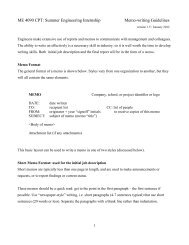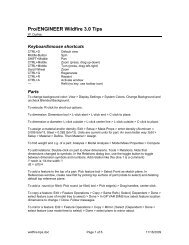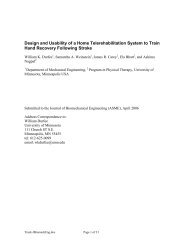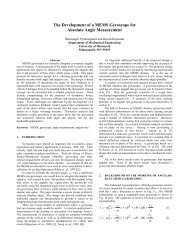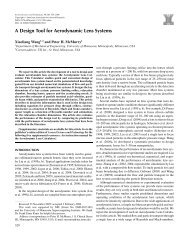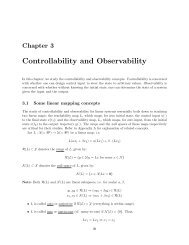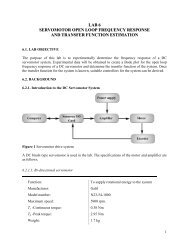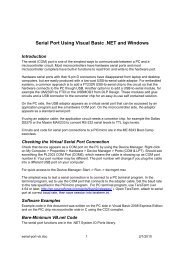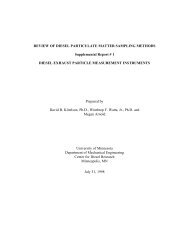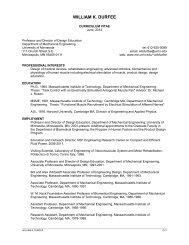Review of diesel particulate matter sampling - Department of ...
Review of diesel particulate matter sampling - Department of ...
Review of diesel particulate matter sampling - Department of ...
Create successful ePaper yourself
Turn your PDF publications into a flip-book with our unique Google optimized e-Paper software.
Figure 17. - Effect <strong>of</strong> dilution ratio on the particle size distribution from a<br />
heavy-duty <strong>diesel</strong> engine with a particle filter. (From Luders, 1997)<br />
Ash Constituents in Exhaust<br />
Recent studies suggest that ash constituents in <strong>diesel</strong> exhaust may contribute to the nuclei<br />
mode. Ash constituents may come from contamination from lubricating oil or additives to the<br />
fuel and typically may account for more than 10% <strong>of</strong> exhaust particle mass (Cadle, et al.,<br />
1997; Williams, et al., 1987, 1989a and 1989b; Abbass, et al. 1987; Andrews, et al. 1993)<br />
Abdul-Khalek, et al. (1998a) studied a 1995 DI <strong>diesel</strong> engine that exhibited both a nuclei and<br />
an accumulation mode in the number distribution <strong>of</strong> exhaust particles. They used a catalytic<br />
stripper to determine concentrations <strong>of</strong> solid and volatile particles in the nanometer size range.<br />
Although the results were somewhat uncertain they suggested that although most particles in<br />
this size range were volatile, solid particle were also present (this was later confirmed by<br />
Abdul-Khalek, et al., 1998b). The authors attributed the formation <strong>of</strong> the nuclei mode to the<br />
relative reduction <strong>of</strong> solid carbonaceous particle emissions compared to volatiles and the<br />
presence <strong>of</strong> ash constituents such as calcium, zinc, and magnesium. The ash components<br />
contribute to the nuclei mode either directly as nanoparticles themselves or by acting as<br />
heterogeneous nuclei for condensation <strong>of</strong> volatile hydrocarbons. They performed chemical<br />
equilibrium calculations and demonstrated that calcium compounds are gaseous at <strong>diesel</strong><br />
combustion temperatures but should form solid compounds within the engine as the products<br />
expand and cool during the exhaust stroke.<br />
01/14/99 Page 46



